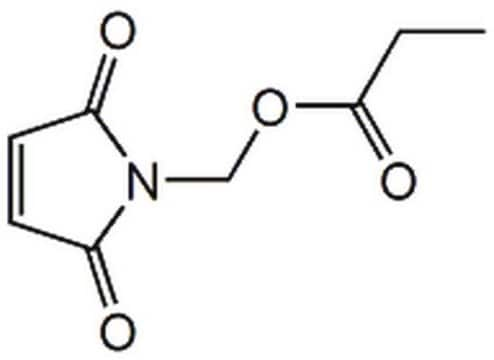559273
S6K1 Inhibitor, PF-4708671
The S6K1 Inhibitor, PF-4708671 controls the biological activity of S6K1. This small molecule/inhibitor is primarily used for Cancer applications.
Synonym(s):
S6K1 Inhibitor, PF-4708671, (2-((4-(5-Ethylpyrimidin-4-yl)piperazin-1-yl)methyl)-5-(trifluoromethyl)-1H-benzo[d]imidazole, p70 Ribosomal S6 Kinase 1 Inhibitor
About This Item
Recommended Products
Quality Level
Assay
≥98% (HPLC)
form
solid
manufacturer/tradename
Calbiochem®
storage condition
OK to freeze
protect from light
color
off-white
solubility
DMSO: 50 mg/mL, pale yellow
shipped in
ambient
storage temp.
2-8°C
General description
Packaging
Warning
Reconstitution
Other Notes
Pearce, L.R., et al. 2010. Biochem. J.431, 245.
Legal Information
Storage Class Code
11 - Combustible Solids
WGK
WGK 3
Flash Point(F)
Not applicable
Flash Point(C)
Not applicable
Certificates of Analysis (COA)
Search for Certificates of Analysis (COA) by entering the products Lot/Batch Number. Lot and Batch Numbers can be found on a product’s label following the words ‘Lot’ or ‘Batch’.
Already Own This Product?
Find documentation for the products that you have recently purchased in the Document Library.
Our team of scientists has experience in all areas of research including Life Science, Material Science, Chemical Synthesis, Chromatography, Analytical and many others.
Contact Technical Service








